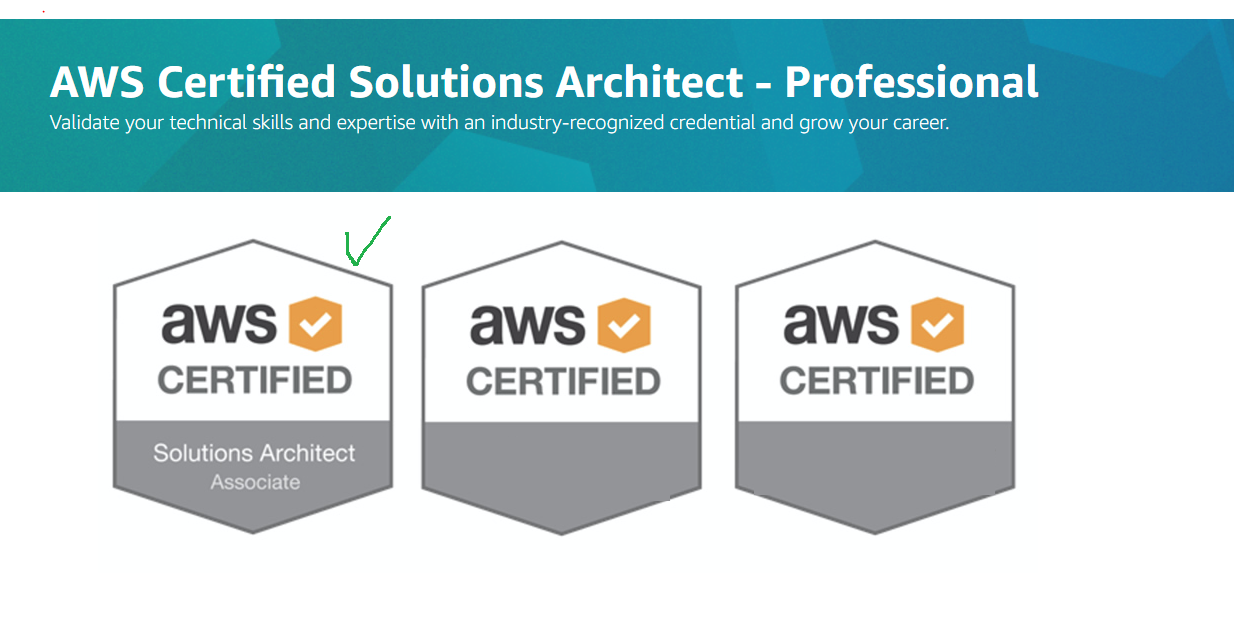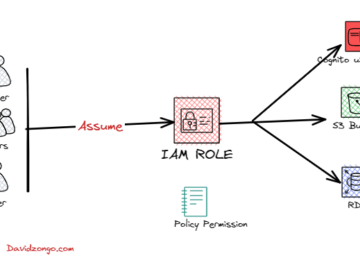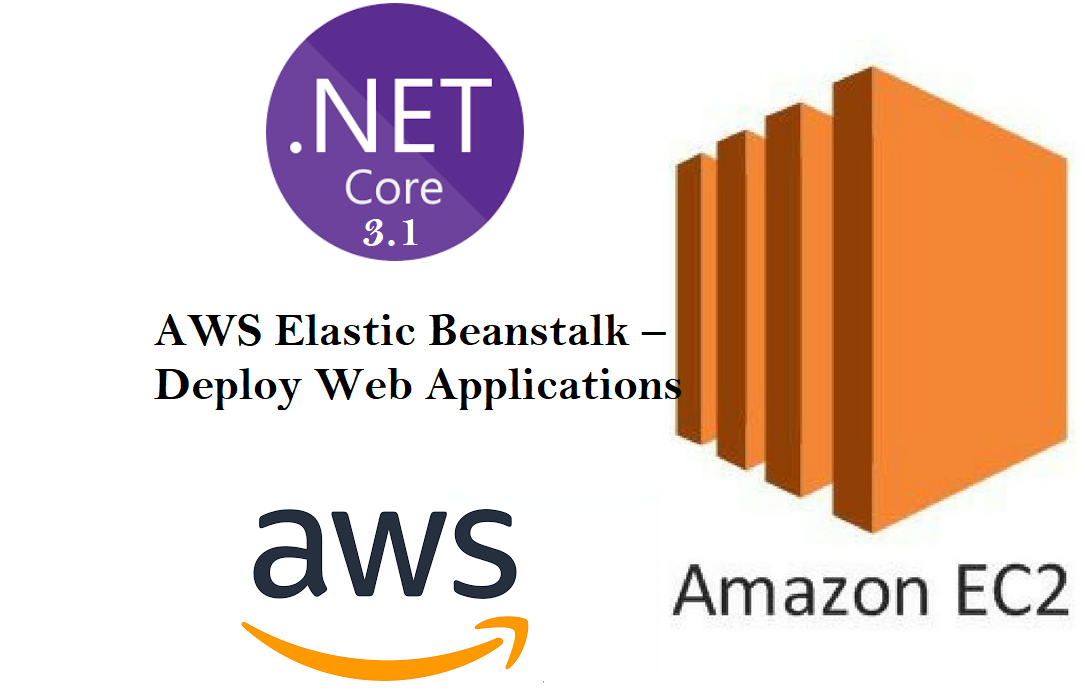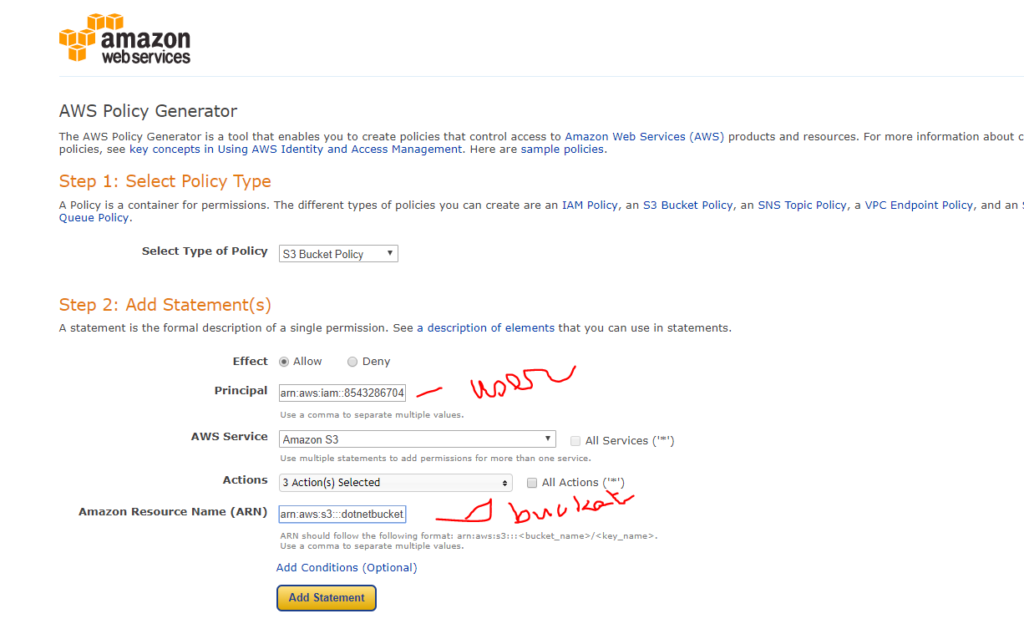Where to start? I am planing to take the AWS certification this week. How and Why?
Four years ago i took a training from an online live education. The live class was great. Then i got the opportunity with Azure to receive a Bizspark program with one of my co-founding startup. Biz-spark was cool for 3 years. So i have mastered around Azure to have our application in the cloud with all dotnet technologies. You know where i am going. I have stop looking into Aws. Then last year the free stuff from Microsoft were over. I asked myself, why didn’t i continue with Aws in the first place? A friend of mine has his business in bluehost and were tired of the indefinite calls with support and number of downtime he is experimenting. He had a wordpress site ,around 1000Gb bandwidth /mo , a total of 500MB MySql and about 25k daily visits, with 15 users that work 9-5 in that site. The Bluehost manage worpress was crashing and they even had a 3 days downtime. He told me he moved from Godaddy to bluehost. I am not saying bluehost is a crap, they were one of the best wordpress choice for hosting. I even do recommand it if you are runing small site. This is true if you are limited to a simple wordpress blog. Or if you have a all technical person taking care of your site security. But when it come to servicing support, each client can judge.
Back to the topic; with my experience with azure and some learnings experience from the online school, we were able to move the site to Aws , i meant help my friend. Surely , he pays 3 times more but, i believe he is happier , has a site that is performing well, and can now spend his time expending his business.
After a year of managing the site during my free time, i know i can improve the performance of his site and most important reduce the cost in aws. I had fun with all these ideas that i decided to go for the Aws solution associate certification first, to ensure i understand the all picture . I the mean time, i opened a free tier account in aws and was able to host the all .net MVC app that we had in Azure..hands on…Here i am.
I used different learning materials, from Amazon web site, to LinkedIn and youtube . There are a lot of stuff to cover but what i found is that you really need to use AWS site and FAQ, whitepaper to make sure you know the latest available solution or services.
I am listing most of my prep-questions , some i fund online and wanted to put them for my readers , if this can help them. I did not created any, i copied from a site and has pud the source, in case you need more.
I hope my experience and hand-ons will be suffisant to pass this test. ComeBacToSee ….or wait and see. Happy reading!
Here are 20 questions and answers that may also help you succeed in your Associate exam!
status immediately. What would probably not be a reason that this is happening?
A. The AMI is missing a required part.
B. The snapshot is corrupt.
C. You need to create storage in EBS first.
D. You’ve reached your volume limit.
Answer(s): C
Explanation:
Amazon EC2 provides a virtual computing environments, known as an instance. After you
launch an instance, AWS recommends that you check its status to confirm that it goes from the
pending status to the running status, the not terminated status. The following are a few reasons
why an Amazon EBS-backed instance might immediately terminate:
You’ve reached your volume limit.
The AM is missing a required part.
The snapshot is corrupt.
Reference:
http://docs.aws.amazon.com/AWSEC2/latest/UserGuide/Using_|nstanceStraightToTerminated.
html
QUESTION: 2
You have set up an Auto Scaling group. The cool down period for the Auto Scaling group is 7
minutes. The first instance is launched after 3 minutes, while the second instance is launched
after 4 minutes. How many minutes after the first instance is launched wil Auto Scaling accept
another scaling actMty request?
A. 11 minutes
B. 7 minutes
C. 10 minutes
D. 14 minutes
Answer(s): A
Explanation:
If an Auto Scaling group is launching more than one instance, the cool down period for each
instance starts after that instance is launched. The group remains locked until the last instance
that was launched has completed its cool down period. In this case the cool down period for the
first instance starts after 3 minutes and finishes at the 10th minute (3+7 cool down), while for the
second instance it starts at the 4th minute and finishes at the 11th minute (4+7 cool down).
Thus, the Auto Scaling group wil receive another request only after 11 minutes.
Reference:
http://docs.aws.amazon.com/AutoScaIing/latest/Deve|operGuide/AS_Concepts.htmI
QUESTION: 3
In Amazon EC2 Container Service components, what is the name of a logical grouping of
container instances on which you can place tasks?
A. A cluster
B. A container instance
C. A container
D. A task definition
Answer(s): A
Explanation:
Amazon ECS contains the following components:
A Cluster is a logical grouping of container instances that you can place tasks on. A Container
instance is an Amazon EC2 instance that is running the Amazon ECS agent and has been
registered into a cluster.
A Task definition is a description of an application that contains one or more container
definitions. A Scheduler is the method used for placing tasks on container instances. A Service
is an Amazon ECS service that allows you to run and maintain a specified number of instances
of a task definition simultaneously.
A Task is an instantiation of a task definition that is running on a container instance. A Container
is a Linux container that was created as part of a task.
Reference:
http://docs.aws.amazon.com/AmazonECS/latest/developerguide/Welcome.html
QUESTION: 4
In the context of AWS support, why must an EC2 instance be unreachable for 20 minutes rather
than allowing customers to open tickets immediately?
A. Because most reachability issues are resolved by automated processes in less than 20
minutes
B. Because all EC2 instances are unreachable for 20 minutes every day when AWS does
routine maintenance
C. Because all EC2 instances are unreachable for 20 minutes when first launched
D. Because of all the reasons listed here
Answer(s): A
Explanation:
An EC2 instance must be unreachable for 20 minutes before opening a ticket, because most
reachability issues are resolved by automated processes in less than 20 minutes and wil not
require any action on the part of the customer. If the instance is stil unreachable after this time
frame has passed, then you should open a case with support.
Reference:
https://aws.amazon.com/premiumsupport/faqs/
QUESTION: 5
Can a user get a notification of each instance start / terminate configured with Auto Scaling?
A. Yes, if configured with the Launch Config
B. Yes, always
C. Yes, if configured with the Auto Scaling group
D. No
Answer(s): C
Explanation:
The user can get notifications using SNS if he has configured the notifications while creating the
Auto Scaling group.
Reference:
http://docs.aws.amazon.com/AutoScaIing/latest/DeveIoperGuide/GettingStartedTutoriaI.html
QUESTION: 6
Amazon EBS provides the ability to create backups of any Amazon EC2 volume into what is
known as
A. snapshots
B. images
C. instance backups
D. mirrors
Answer(s): A
Explanation:
Amazon allows you to make backups of the data stored in your EBS volumes through
snapshots that can later be used to create a new EBS volume.
Reference:
http://docs.amazonwebservices.com/AWSEC2/latest/UserGuide/Storage.htmI
QUESTION: 7
To specify a resource in a policy statement, in Amazon EC2, can you use its Amazon Resource
Name (ARN)?
A. Yes, you can.
B. No, you can’t because EC2 is not related to ARN.
C. No, you can’t because you can’t specify a particular Amazon EC2 resource in an IAM policy.
D. Yes, you can but only for the resources that are not affected by the action.
Answer(s): A
Explanation:
Some Amazon EC2 API actions allow you to include specific resources in your policy that can
be created or modified by the action. To specify a resource in the statement, you need to use its
Amazon Resource Name (ARN).
Reference:
http://docs.aws.amazon.com/AWSEC2/latest/UserGuide/ec2-ug.pdf
QUESTION: 8
After you recommend Amazon Redshift to a client as an alternative solution to paying data
warehouses to analyze his data, your client asks you to explain why you are recommending
Redshift. Which of the following would be a reasonable response to his request?
A. It has high performance at scale as data and query complexity grows.
B. It prevents reporting and analytic processing from interfering with the performance of OLTP
workloads.
C. You don’t have the administrative burden of running your own data warehouse and dealing
with setup, durability, monitoring, scaling, and patching.
D. Al answers listed are a reasonable response to his question
Answer(s): D
Explanation:
Amazon Redshift delivers fast query performance by using columnar storage technology to
improve I/O efficiency and parallelizing queries across multiple nodes. Redshift uses standard
PostgreSQL JDBC and ODBC drivers, allowing you to use a wide range of familiar SQL clients.
Data load speed scales linearly with cluster size, with integrations to Amazon S3, Amazon
DynamoDB, Amazon Elastic MapReduce,
Amazon Kinesis or any SSH-enabled host.
AWS recommends Amazon Redshift for customers who have a combination of needs, such as:
High performance at scale as data and query complexity grows Desire to prevent reporting and
analytic processing from interfering with the performance of OLTP workloads
Large volumes of structured data to persist and query using standard SQL and existing BI tools
Desire to the administrative burden of running one’s own data warehouse and dealing with
setup, durability, monitoring, scaling and patching
Reference:
https://aws.amazon.com/running_databases/#redshift_anchor
QUESTION: 9
One of the criteria for a new deployment is that the customer wants to use AWS Storage
Gateway. However you are not sure whether you should use gateway-cached volumes or
gateway-stored volumes or even what the differences are. Which statement below best
describes those differences?
A. Gateway-cached lets you store your data in Amazon Simple Storage Service (Amazon S3)
and retain a copy of frequently accessed data subsets local y. Gateway-stored enables you to
configure your on-premises gateway to store all your data locally and then asynchronously back
up point-in-time snapshots of this data to Amazon S3.
B. Gateway-cached is free whilst gateway-stored is not.
C. Gateway-cached is up to 10 times faster than gateway-stored.
D. Gateway-stored lets you store your data in Amazon Simple Storage Service (Amazon S3)
and retain a copy of frequently accessed data subsets local y. Gateway-cached enables you to
configure your on-premises gateway to store all your data locally and then asynchronously back
up point-in-time snapshots of this data to Amazon S3.
Answer(s): A
Explanation:
Volume gateways provide cloud-backed storage volumes that you can mount as Internet Small
Computer System Interface (iSCSI) devices from your on-premises application sewers. The
gateway supports the following volume configurations:
Gateway-cached volumes — You store your data in Amazon Simple Storage Service (Amazon
S3) and retain a copy of frequently accessed data subsets local y. Gateway-cached volumes
offer a substantial cost savings on primary storage and minimize the need to scale your storage
on-premises. You also retain low-latency access to your frequently accessed data. Gateway-
stored volumes — If you need low-latency access to your entire data set, you can configure your
on-premises gateway to store all your data local y and then asynchronously back up point-in-
time snapshots of this data to Amazon S3. This configuration provides durable and inexpensive
off-site backups that you can recover to your local data center or Amazon EC2. For example, if
you need replacement capacity for disaster recovery, you can recover the backups to Amazon
EC2.
Reference:
http://docs.aws.amazon.com/storagegateway/latest/userguide/volume-gateway.html
QUESTION: 10
A user is launching an EC2 instance in the US East region. Which of the below mentioned
options is recommended by AWS with respect to the selection of the availability zone?
A. Always select the AZ while launching an instance
B. Always select the US-East-1-a zone for HA
C. Do not select the AZ; instead let AWS select the AZ
D. The user can never select the availability zone while launching an instance
Answer(s): C
Explanation:
When launching an instance with EC2, AWS recommends not to select the availability zone
(AZ). AWS specifies that the default Availability Zone should be accepted. This is because it
enables AWS to select the best Availability Zone based on the system health and available
capacity. If the user launches additional instances, only then an Availability Zone should be
specified. This is to specify the same or different AZ from the running instances.
Reference:
http://docs.aws.amazon.com/AWSEC2/latest/UserGuide/using-regions-availability-zones.html
QUESTION: 11
A user is storing a large number of objects on AWS S3. The user wants to implement the search
functionality among the objects. How can the user achieve this?
A. Use the indexing feature of S3.
B. Tag the objects with the metadata to search on that.
C. Use the query functionality of S3.
D. Make your own DB system which stores the S3 metadata for the search functionality.
Answer(s): D
Explanation:
In Amazon Web Services, AWS S3 does not provide any query facility. To retrieve a specific
object the user needs to know the exact bucket / object key. In this case it is recommended to
have an own DB system which manages the S3 metadata and key mapping.
Reference:
http://media.amazonwebservices.com/AWS_Storage_Options.pdf
QUESTION: 12
After setting up a Virtual Private Cloud (VPC) network, a more experienced cloud engineer
suggests that to achieve low network latency and high network throughput you should look into
setting up a placement group. You know nothing about this, but begin to do some research
about it and are especially curious about its limitations. Which of the below statements is wrong
in describing the limitations of a placement group?
A. Although launching multiple instance types into a placement group is possible, this reduces
the likelihood that the required capacity wil be available for your launch to succeed.
B. A placement group can span multiple Availability Zones.
C. You can’t move an existing instance into a placement group.
D. A placement group can span peered VPCs
Answer(s): B
Explanation:
A placement group is a logical grouping of instances within a single Availability Zone. Using
placement groups enables applications to participate in a low-latency, 10 Gbps network.
Placement groups are recommended for applications that benefit from low network latency, high
network throughput, or both. To provide the lowest latency, and the highest packet-per-second
network performance for your placement group, choose an instance type that supports
enhanced networking.
Placement groups have the following limitations:
The name you specify for a placement group a name must be unique within your AWS account.
A placement group can’t span multiple Availability Zones.
Although launching multiple instance types into a placement group is possible, this reduces the
likelihood that the required capacity will be available for your launch to succeed. We
recommend using the same instance type for all instances in a placement group.
You can’t merge placement groups. Instead, you must terminate the instances in one placement
group, and then relaunch those instances into the other placement group. A placement group
can span peered VPCs; however, you wil not get full-bisection bandwidth between instances in
peered VPCs. For more information about VPC peering connections, see VPC Peering in the
Amazon VPC User Guide.
You can’t move an existing instance into a placement group. You can create an AM from your
existing instance, and then launch a new instance from the AMI into a placement group.
Reference:
http://docs.aws.amazon.com/AWSEC2/latest/UserGuide/placement-groups.html
QUESTION: 13
What is a placement group in Amazon EC2?
A. It is a group of EC2 instances within a single Availability Zone.
B. It the edge location of your web content.
C. It is the AWS region where you run the EC2 instance of your web content.
D. It is a group used to span multiple Availability Zones.
Answer(s): A
Explanation:
A placement group is a logical grouping of instances within a single Availability Zone.
Reference:
http://docs.aws.amazon.com/AWSEC2/latest/UserGuide/placement-groups.html
QUESTION: 14
You are migrating an internal sewer on your DC to an EC2 instance with EBS volume. Your
server disk usage is around 500GB so you just copied all your data to a 2TB disk to be used
with AWS Import/Export. Where wil the data be imported once it arrives at Amazon?
A. to a 2TB EBS volume
B. to an S3 bucket with 2 objects of 1TB
C. to an 500GB EBS volume
D. to an S3 bucket as a 2TB snapshot
Answer(s): B
Explanation:
An import to Amazon EBS wil have different results depending on whether the capacity of your
storage device is less than or equal to 1 TB or greater than 1 TB. The maximum size of an
Amazon EBS snapshot is 1 TB, so if the device image is larger than 1 TB, the image is chunked
and stored on Amazon S3. The target location is determined based on the total capacity of the
device, not the amount of data on the device.
Reference:
http://docs.aws.amazon.com/AWSImportExport/latest/DG/Concepts.html
QUESTION: 15
A client needs you to import some existing infrastructure from a dedicated hosting provider to
AWS to try and save on the cost of running his current website. He also needs an automated
process that manages backups, software patching, automatic failure detection, and recovery.
You are aware that his existing set up currently uses an Oracle database. Which of the following
AWS databases would be best for accomplishing this task?
A. Amazon RDS
B. Amazon Redshift
C. Amazon SimpIeDB
D. Amazon EIastiCache
Answer(s): A
Explanation:
Amazon RDS gives you access to the capabilities of a familiar MySQL, Oracle, SQL Server, or
PostgreSQL database engine. This means that the code, applications, and tools you already
use today with your existing databases can be used with Amazon RDS. Amazon RDS
automatically patches the database software and backs up your database, storing the backups
for a user-defined retention period and enabling point-in-time recovery.
Reference:
http://docs.aws.amazon.com/AmazonRDS/latest/UserGuide/Welcome.html
QUESTION: 16
True orfalsez A VPC contains multiple subnets, where each subnet can span multiple
Availability Zones.
A. This is true only if requested during the set-up of VPC.
B. This is true.
C. This is false.
D. This is true only for US regions.
Answer(s): C
Explanation:
A VPC can span several Availability Zones. In contrast, a subnet must reside within a single
Availability Zone.
Reference:
https://aws.amazon.com/vpc/faqs/
QUESTION: 17
An edge location refers to which Amazon Web Service?
A. An edge location is refered to the network configured within a Zone or Region
B. An edge location is an AWS Region
C. An edge location is the location of the data center used for Amazon CIoudFront.
D. An edge location is a Zone within an AWS Region
Answer(s): C
Explanation:
Amazon CIoudFront is a content distribution network. A content delivery network or content
distribution network (CDN) is a large distributed system of sewers deployed in multiple data
centers across the world. The location of the data center used for CDN is called edge location.
Amazon CIoudFront can cache static content at each edge location. This means that your
popular static content (e.g., your site’s logo, navigational images, cascading style sheets,
JavaScript code, etc.) will be available at a nearby edge location for the browsers to download
with low latency and improved performance for viewers. Caching popular static content with
Amazon CIoudFront also helps you offload requests for such files from your origin sever —
CIoudFront serves the cached copy when available and only makes a request to your origin
server if the edge location receMng the browser’s request does not have a copy of the file.
Reference:
http://aws.amazon.com/c|oudfront/
QUESTION: 18
You are looking at ways to improve some existing infrastructure as it seems a lot of engineering
resources are being taken up with basic management and monitoring tasks and the costs seem
to be excessive. You are thinking of deploying Amazon E|asticCache to help. Which of the
following statements is true in regards to EIasticCache?
A. You can improve load and response times to user actions and queries however the cost
associated with scaling web applications will be more.
B. You can’t improve load and response times to user actions and queries but you can reduce
the cost associated with scaling web applications.
C. You can improve load and response times to user actions and queries however the cost
associated with scaling web applications will remain the same.
D. You can improve load and response times to user actions and queries and also reduce the
cost associated with scaling web applications.
Answer(s): D
Explanation:
Amazon EIastiCache is a web service that makes it easy to deploy and run Memcached or
Redis protocol-compliant server nodes in the cloud. Amazon EIastiCache improves the
performance of web applications by allowing you to retrieve information from a fast, managed,
in-memory caching system, instead of relying entirely on slower disk-based databases. The
service simplifies and offloads the management, monitoring and operation of in-memory cache
environments, enabling your engineering resources to focus on developing applications.
Using Amazon EIastiCache, you can not only improve load and response times to user actions
and queries, but also reduce the cost associated with scaling web applications.
Reference:
https://aws.amazon.com/eIasticache/faqs/
QUESTION: 19
Do Amazon EBS volumes persist independently from the running life of an Amazon EC2
instance?
A. Yes, they do but only if they are detached from the instance.
B. No, you cannot attach EBS volumes to an instance.
C. No, they are dependent.
D. Yes, they do.
Answer(s): D
Explanation:
An Amazon EBS volume behaves like a raw, unformatted, external block device that you can
attach to a single instance. The volume persists independently from the running life of an
Amazon EC2 instance.
Reference:
http://docs.amazonwebservices.com/AWSEC2/latest/UserGuide/Storage.html
QUESTION: 20
Your supervisor has asked you to build a simple file synchronization service for your
department. He doesn’t want to spend too much money and he wants to be notified of any
changes to files by email. What do you think would be the best Amazon service to use for the
email solution?
A. Amazon SES
B. Amazon CIoudSearch
C. Amazon SWF
D. Amazon AppStream
Answer(s): A
Explanation:
File change notifications can be sent via email to users following the resource with Amazon
Simple Email Service (Amazon SES), an easy-to-use, cost-effective email solution.
Reference:
http://media.amazonwebservices.com/architecturecenter/AWS_ac_ra_fiIesync_08.pdf
QUESTION: 21
Does DynamoDB support in-place atomic updates?
A. Yes
B. No
C. It does support in-place non-atomic updates
D. It is not defined
Answer(s): A
Explanation:
DynamoDB supports in-place atomic updates.
Reference:
http://docs.aws.amazon.com/amazondynamodb/latest/developerguide/\NorkingWithItems.htmI#
Working WithItems.AtomicCounters
QUESTION: 22
Your manager has just given you access to multiple VPN connections that someone else has
recently set up between all your company’s offices. She needs you to make sure that the
communication between the VPNs is secure. Which of the following services would be best for
providing a low-cost hub-and-spoke model for primary or backup connectMty between these
remote offices?
A. Amazon C|oudFront
B. AWS Direct Connect
C. AWS C|oudHSM
D. AWS VPN CIoudHub
Answer(s): D
Explanation:
If you have multiple VPN connections, you can provide secure communication between sites
using the
AWS VPN CIoudHub. The VPN CIoudHub operates on a simple hub-and-spoke model that you
can use with or without a VPC. This design is suitable for customers with multiple branch offices
and existing Internet connections who would like to implement a convenient, potentially low-cost
hub-and-spoke model for primary or backup connectMty between these remote offices.
Reference:
http://docs.aws.amazon.com/AmazonVPC/latest/UserGuide/VPN_CIoudHub.htmI
QUESTION: 23
Amazon EC2 provides a . It is an HTTP or HTTPS request that uses the HTTP verbs GET or
POST.
A. web database
B. .net framework
C. Query API
D. C library
Answer(s): C
Explanation:
Amazon EC2 provides a Query API. These requests are HTTP or HTTPS requests that use the
HTTP verbs GET or POST and a Query parameter named Action.
Reference:
http://docs.aws.amazon.com/AWSEC2/latest/APIReference/making-api-requests.html
QUESTION: 24
In Amazon AWS, which of the fol owing statements is true of key pairs?
Sources: https://free-braindumps.com/amazon/free-aws-solution-architect-associate-braindumps.html








